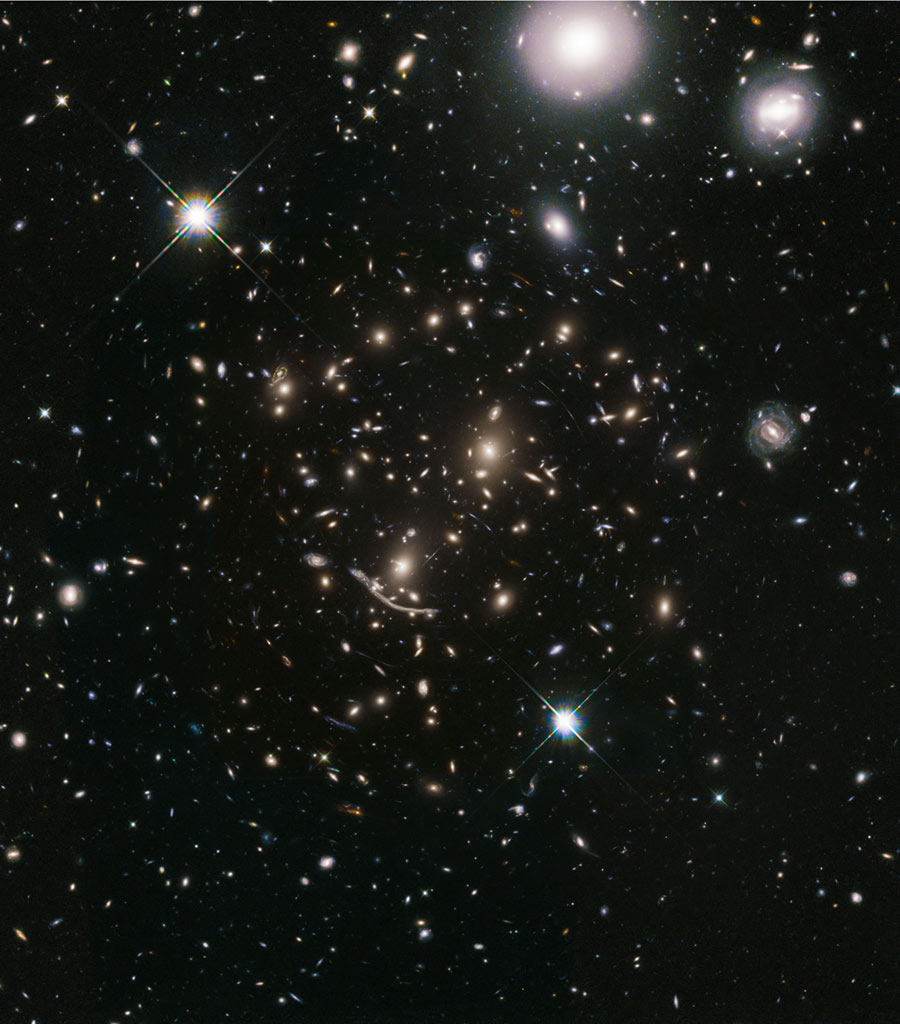Hubble Goes Wide to Seek Out Far-Flung Galaxies

New Hubble project provides a new wide-field view of galaxy cluster Abell 370
The universe is a big place. The Hubble Space Telescope’s views burrow deep into space and time, but cover an area a fraction the angular size of the full Moon. The challenge is that these “core samples” of the sky may not fully represent the universe at large. This dilemma for cosmologists is called cosmic variance. By expanding the survey area, such uncertainties in the structure of the universe can be reduced.
A new Hubble observing campaign, called Beyond Ultra-deep Frontier Fields And Legacy Observations (BUFFALO), will boldly expand the space telescope’s view into regions that are adjacent to huge galaxy clusters previously photographed by NASA’s Spitzer and Hubble space telescopes under a program called Frontier Fields.
The six massive clusters were used as “natural telescopes,” to look for amplified images of galaxies and supernovas that are so distant and faint that they could not be photographed by Hubble without the boost of light caused by a phenomenon called gravitational lensing. The clusters’ large masses, mainly composed of dark matter, magnify and distort the light coming from distant background galaxies that otherwise could not be detected. The BUFFALO program is designed to identify galaxies in their earliest stages of formation, less than 800 million years after the big bang.
